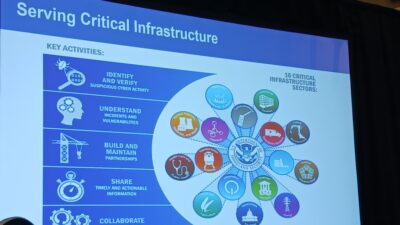Influence of COVID-19 on China’s automation market: Initial impact of COVID-19 on the domestic Chinese automation market less than expected; most first-quarter sales came from orders last year. Negative COVID-19 effects on Chinese automation in the second or third quarter may increase; opportunities for automation growth exist.

Learning Objectives
- Limited impacts of COVID-19 were seen on first-quarter results in China, though second and third quarters may be more apparent.
- Automation users may expand market advantages, competitiveness, and services.
The outbreak of coronavirus already has caused a huge impact on the global economic and manufacturing industry. For the challenges faced by China after the outbreak, economists and international relations experts have expressed opinions and listed many challenges; a few experts see opportunities from the crisis.
Leaving aside these macro-level discussions, discussion below covers the impact of COVID-19 on China’s domestic automation market, especially on the industrial automation market from three stages: short, medium and long term.
Short-term COVID-19 effects on Chinese automation
In the short term, the past three months of 2020 [first-quarter] have been the period of concentrated outbreaks in China, while the European and American countries are still in the initial stage. At this stage, in fact, the impact of COVID-19 on the domestic automation market is not as significant as expected. Although the performance of most enterprises declined, the overall decline was not significant. The main reason is most of the sales in the first quarter came from orders signed last year, which cannot fully reflect the impact of the epidemic on the market; at the same time, because the epidemic in Europe and the United States is still in the early stages, the negative impact of overseas orders is limited.
Medium-term COVID-19 effects on Chinese automation
The medium term looks at the next three quarters of 2020. The extent of control of COVID-19 globally and economic recovery are uncertain factors in the medium term. Due to the continuous growth of overseas sales markets such as engineering design and contracting businesses, mechanical equipment and overseas investment of domestic manufacturers in recent years, the negative effects of the epidemic on the second or third quarter may be more obvious.
Due to the dependence of domestic equipment on imported components, it may also face pressures such as supply interruption, delay or substantial price increase. The medium-term automation market in China is not optimistic.
Long-term COVID-19 effects on Chinese automation
Long term is defined as two to three years after 2020. At this stage, the global COVID-19 spread seems likely to be controlled and economic order restored. After COVID-19 health impacts are mitigated, there will be recovery growth in the market, and some postponed investments will be recovered. At present, the mainstream view is the global manufacturing supply chain will be readjusted after COVID-19, and there is great uncertainty about how these adjustments will affect the global status and China’s manufacturing industry.
In recent years, the cost of China’s domestic manufacturing industry continues to rise as well as the risk of a trade war and decoupling between China and the United States. At the same time, China also faces the challenge of industrial upgrading, which will be very important for China’s manufacturing industry in the next two or three years.
Post-COVID-19 supply chain changes
With regard to the relocation or outflow of European, American and Japanese production capacity in China after COVID-19 effects, experts estimate the influence would be limited. However, foreign investments in new production capacity might be more cautious than before.
From the product point of view, the COVID-19 impacts on the discrete and mechanical automation market will be much greater than the process and infrastructure automation. This is due to the discrete and mechanical automation industry’s dependence on overseas markets, Chinese government economic stimulus policies and the characteristics of industries served by different automation markets.
Relatively speaking, the market of digital solutions should not be affected by COVID-19. At present, the leading Chinese customers of these products are mainly state-owned enterprises or large private enterprises with strong strength. Investments in digital solutions is relatively solid and sustainable.
During the market downturn in China the past two years, many industry-leading manufacturing businesses have maintained growth, which means their market share has increased faster in the downward phase of the cycle. For leading manufacturers, the COVID-19 crisis may also be an opportunity to expand market advantages if they can continue to improve, enhance competitiveness, and provide customers with more needed services.
Stone Shi is executive editor-in-chief, Control Engineering China. Edited by Mark T. Hoske, content manager, Control Engineering, CFE Media, [email protected].
KEYWORDS: COVID-19, automation impact, China
CONSIDER THIS
Is your company adding automation and digitalization investments because of COVID-19?



